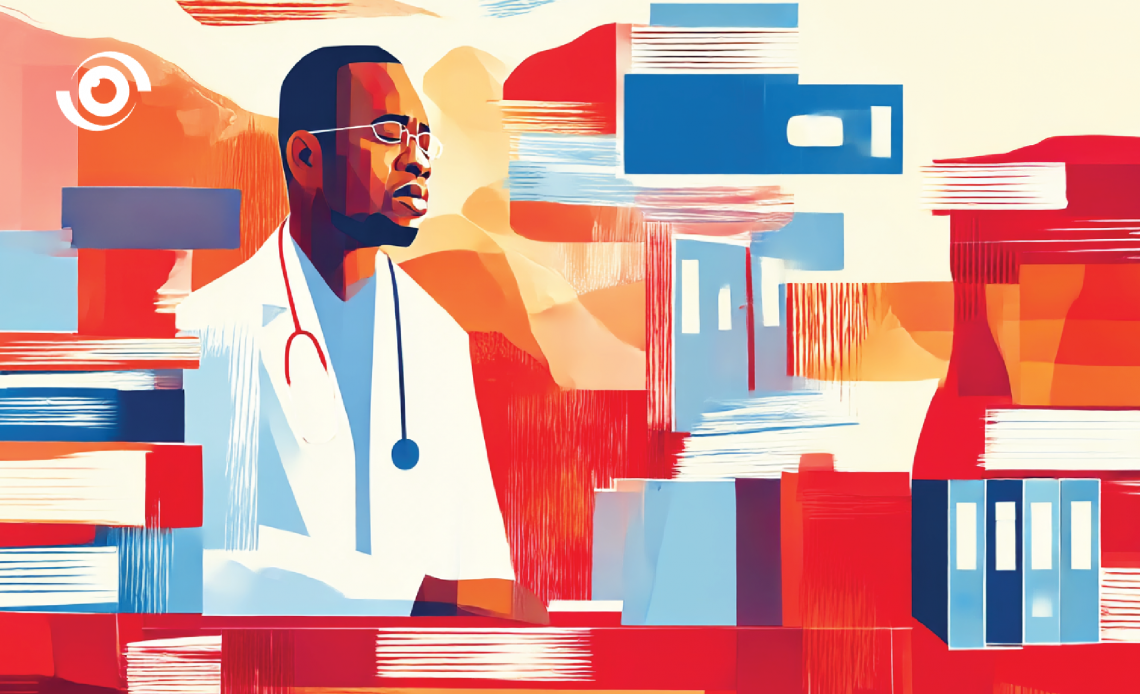Ibukun Oguntola and Anwuli Nwankwo (Lead writers)
On September 1st, 2025, the medical community and Nigerians were shaken by the tragic news of the passing of Dr. Femi Rotifa, a Resident Doctor in the Department of Surgery at the Rivers State University Teaching Hospital (RSUTH).
Dr. Rotifa died while on call duty, an incident widely reported to be linked to the exhausting, and extended hours he had been compelled to work.
Sadly, this is not an isolated case. Over the years, countless doctors and healthcare workers have collapsed under the crushing weight of long shifts, overwhelming patient loads, and a severely under-resourced system. To often their silent sacrifices go unnoticed until moments of tragedy bring them painfully into the public eye.
If healthcare is the lifeblood of any society, then doctors and other health workers are its beating heart. Yet, Nigeria continue to lose them, not only to the mass migration of doctors, also referred to as Japa Syndrome , but increasingly to avoidable deaths brought on by unsafe working conditions and environments.

The health workforce crisis
The World Health Organization (WHO) estimates that by 2030, there will be a global shortfall of over 10 million health workers, with the most severe deficits in low-and-middle income countries like Nigeria. This projected shortfall directly threatens the realisation of Sustainable Development Goal 3 (SDG3): ensuring healthy lives and promoting well-being for all.
According to the Nigeria Health Workforce Profile, most skilled health workers are concentrated in urban centres such as Lagos, Abuja, and southern states, while rural areas and much of the northern region remain underserved. This imbalance leads to critical care gaps and physician burnout.
According to the State of Health of the Nation Report 2024, the number of health training institutions grew by 21% and dental schools increased by 18% between 2022–2024. However, regional disparities persist, as most of these institutions remain concentrated in southern Nigeria.
Annual graduation rates, 4,399 doctors and 274 dentists in 2024, remain insufficient. The doctor-to-patient ratio stands at just 2.9 per 10,000 which is about one doctor per 3,474 people, far below the WHO recommendation of 17 per 10,000. With a population exceeding 230 million, Nigeria needs nearly 400,000 doctors to meet international standards but has only around 66,000.

Both primary and general hospitals are struggling with severe shortages. For example, a social media post indicated that the number of resident doctor at Lautech Teaching Hospital had plummeted from over 250 to fewer than 60. Those left behind face overwhelming burdens, unsafe working hours, and impossible workload, leaving both their own health and patient care at serious risk.
In some facilities and departments, the situation has become so dire that a single medical officer is scheduled to be on duty for the entire month. Widely circulated images on social media highlight this alarming testament, serving as a stark reminder of the escalating strain on Nigeria’s health system.

With too few practitioners available to manage the significant patient load, work shifts exceeding 48 hours are not uncommon, an arrangement that endangers both health providers and the patients they serve
Tools for change in Nigeria
In 2023, the Federal Ministry of Health and Social Welfare (FMOHSW) conducted a labour market assessment of the health workforce. The study showed that about 300,000–350,000 workers were employed in 2022 across key cadres, either as core health workers (midwives, nurses, doctors, laboratory or community health professionals), or as enablers (health insurance, digital and data solutions, R&D, manufacturing, supply chain and logistics and development partners). However, this figure remains below both Nigeria’s estimated needs and global benchmarks.
In response, the Ministry pursued waivers from health regulatory bodies to accelerate the production of health workers nationwide and committed to training over 100,000 frontline health workers, especially at the primary healthcare (PHC) level, by 2027. As of December 2024, 40,000 frontline health workers have been trained on integrated healthcare across the country.
In 2025, FMOHSW with partners launched a Health Labour Market Analysis (HLMA) to strengthen health workforce planning aligned to the National Health Sector Renewal Investment Programme. It is hoped that the evidence-informed findings and recommendations will help gain a better understanding of the health workforce, develop policies to address key health workforce issues, and identify areas for strategic health workforce investment.
There are other solutions that must be harnessed as well. The Nigeria Health Workforce Registry (NHWR) is a critical tool for managing and addressing the human resources for health (HRH) crisis.
With accurate data, states and the federal government can design effective strategies for recruitment, distribution, and retention of health workers. However, the registry must not remain a theoretical resource, it needs to be actively updated and applied in decision-making.
The approval of the National Health Workforce Migration Policy in August 2024 signals a strategic shift toward managing health workforce shortages.

Challenges and advocacy priorities
Despite policy progress, systemic barriers remain such as chronic underfunding, industrial disputes over pay and safety, and poor implementation of welfare and safety nets. Retention strategies must move beyond rhetoric:
- Enforce existing work-hour and occupational safety regulations to end practices that put lives at risk, including excessive on-call duties.
- Mandate the use of the NHWR and labour assessments for transparent allocation of staff and needs-based recruitment.
- Standardise and regularly review remuneration and hazard allowances in line with inflation and evolving job risks.
- Expand federal and state investments in hospital infrastructure, equipment, and digital health systems to reduce manual burden on clinical staff.
- Institutionalise mental health and support services for frontline medical personnel and mandate these services as a requirement of professional licensing and facility accreditation.
Call to action for government and stakeholders
Protecting Nigeria’s doctors must be a governance and accountability issue. The government must:
- Accelerate the implementation of the National Health Workforce Migration Policy, with measurable benchmarks for retention, rural deployment, and return migration programmes.
- Invest in the Health Workforce Registry’s capacity, interoperability, data security, and provincial rollout.
- Partner with professional associations, civil society, and development partners to monitor and publicly report on progress, with professional associations playing a lead coordinating role across public and private hospitals.
- Drive an urgent legislative agenda to codify maximum working hours, mandatory rest periods, and legal protections for health workers at all levels.
As the tragedy of Dr. Femi Rotifa shows, the time for half-measures has passed. It is a national imperative to build systems that protect those who care for all. The future of Nigeria’s healthcare, of its citizens and its practitioners, depends on it. The solutions exist from international best practices to local innovations.


